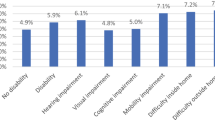Abstract
This paper looks at various ways teleworking can be linked to surveillance in employment, making recommendations about how telework can be made more acceptable. Technological methods can allow managers to monitor the actions of teleworkers as closely as they could monitor "on site" workers, and in more detail than the same managers could traditionally. Such technological methods of surveillance or monitoring have been associated with low employee morale. For an employer to ensure health and safety may require inspections of the teleworkplace. When the teleworkplace is in the home, there may be an invasion of privacy associated with such inspections, that could be perceived and resented as surveillance. A problem of telework is that teleworkers may feel isolated. Methods to counter this could be associated with further forms of surveillance, and fear of such surveillance may inhibit them from reaching their potential as methods to counter isolation. The idea that teleworking may also allow communications to be intercepted by third parties is also looked at. Some, but not all, of the issues considered are applicable, to some extent, in non-teleworked employment situations. The overall conclusion of the paper is that the potential exists for surveillance to be associated with telework. Fears of such surveillance may turn actors against telework. However, much can be done to reduce such fears.
Similar content being viewed by others
References
Aiello, J. R. and Y. Shao: 1993, ‘Electronic Performance Monitoring and Stress: The Role of Feedback and Goal Setting’, in M. J. Smith and G. Salvendy (eds.), Human-Computer Interaction: Applications and Case Studies (Elsevier Science Publishers, Amsterdam), pp. 1011–1016.
Aiello, J. R. and K. J. Kolb: 1995, ‘Electronic Performance Monitoring: A Risk Factor for Workplace Stress’, in S. L. Sauter and L. R. Murphy (eds.), Organizational Risk Factors for Job Stress (American Psychological Association, Washington, DC), pp. 163–179.
Bibby, A.: 1996, Trade Unions and Telework: Report produced for the International Trade Secretariat FIET, Autumn 1996 at http://www.eclipse.co.uk/pens/bibby/fietrpt.html accessed 04.03.1998.
Brown, W. S.: 1996, ‘Technology, Workplace Privacy and Personhood’, Journal of Business Ethics 15, 1237–1248.
Browne, N.: 1995 (Delegate and Branch Chair, Union of Communications Workers), ‘Conclusions’, in N. Browne, Teleworking Conference Report: “WORKING ON THE INFOBAHN” Teleworking & The Labour Movement. Conference held at Manchester, England, 13.01. 1995. At http:/www.humanities.mcmaster.ca/~misc2/telwkcon.htm, accessed 21.10.1997, also at “Teleworking Conference Report by Nic Browne (Part 2)” http://opus.freenet.vancouver.bc.ca/ labour/women/women_an.txt accessed 21.10.1997.
Bunyan, N.: 1997, ‘Ex-police chief wins phone tapping case’, Daily Telegraph, 26.06.1997, U.K. News.
Campbell, D.: 1997, ‘Europe spikes spooks' e-mail eavesdrop bid’, The Guardian, 15.10.1997, Online.
Cook, E.: 1995 (National Officer, Union of Communications Workers), ‘The Teleworking Directory Enquiry Experiment at Inverness’, in N. Browne, Teleworking Conference Report: “WORKING ON THE INFOBAHN” Teleworking & The Labour Movement. Conference held at Manchester, England, 13.01.1995. At http://www.humanities.mcmaster.ca/~misc2/telwkdir.htm, accessed 21.10.1997, also at “Teleworking Conference Report by Nic Browne (Part 2)” http://opus.freenet.vancouver.bc.ca/ labour/women/women_an.txt accessed 21.10.1997.
Dandeker, C.: 1990, Surveillance, Power and Modernity: Bureaucracy and Discipline from 1700 to the Present Day (Polity, Cambridge).
Davies, S.: 1998, ‘EU Simmers Over Menwith Listening Post’, Daily Telegraph, 16.07.1998, Connected p. 6.
Department of Trade and Industry: 1998, Secure Electronic Commerce Statement 27.04.1998 (Department of Trade and Industry, London) at http://www.dti.gov.uk/CII/ana27p.html accessed 30.07.1998.
European Telework Online: 1996?, ‘Teleworking – Telework (Telecommuting): the Benefits’, at http://www.eto.org.uk/faq/faq03.htm accessed 04.03.1998.
Foucault, M.: 1979, Discipline and Punish: the Birth of the Prison, A. Sheridan (tr.) (Penguin, Harmondsworth).
Fried, C.: 1968, ‘Privacy’, Yale Law Journal 77, 475–493. As reprinted under the title ‘Privacy [A moral analysis]’ in F. D. Schoeman (ed.): 1984, Philosophical Dimensions of Privacy: An Anthology (Cambridge University Press, Cambridge).
Girard, J.: 1998 ‘Should Home Computers be Used for Telecommuting?’, North America Network Service Providers, Remote Access, Mobile Business Strategies, Network Business Management, and Telecommuting and Remote Access, each 02.02.1998, Document number KA-030-5078 (Gartner Group, Stamford, CT) at http://advisor.gartner.com/inbox/articles/ iheadline5.html accessed 23.03.1998, but not accessible online 30.07.1998.
Lally, L.: 1996, ‘Privacy versus Accessibility: The Impact of Situationally Conditioned Belief’, Journal of Business Ethics 15, 1221–1226.
Lyon, D.: 1994, The Electronic Eye: The Rise of Surveillance Society (Polity, Cambridge).
Manning, R. C.: 1997, ‘Liberal and Communitarian Defenses of Workplace Privacy’, Journal of Business Ethics 16, 817–823.
Odgers, G.: 1994, ‘Occupational Health and Safety and Industrial Relations’ (Union Research Centre on Organisation and Technology, Melbourne) at http://teloz.latrobe.edu.au/testra/pgandpip/isochs2.html accessed 03.03.1998.
Parkinson, A.: 1995, ‘Teleworking in Britain’, in G. Hollinshead (ed.), Work and Employment, Issue 4, Teleworking (Bristol Business School, University of the West of England, Bristol), pp. 2–3.
Rogerson, S.: 1998, Ethical Aspects of Information Technology: Issues for Senior Executives (Institute of Business Ethics, London).
Samuels, P.: 1996, ‘Who' Reading Your E-Mail? Maybe the Boss’, The New York Times, 12.05.1996, p. F11 as reported in Spinello, 1997.
Schoeman, F. D.: 1984, ‘Privacy and Intimate Information’, in F. D. Schoeman (ed.), 1984, Philosophical Dimensions of Privacy: An Anthology (Cambridge University Press, Cambridge).
Spinello, R. A.: 1995, Ethical Aspects of Information Technology (Prentice-Hall, Englewood Cliffs, NJ).
Spinello, R. A.: 1997, ‘The Case for E-Mail Privacy’, paper presented at The Second Annual Ethics and Technology Conference, Chicago, 06–07.06.1997. At http://www.cmsu.edu/englphil/spinello.htm, accessed 21.10.1997.
Stanworth, J. and Stanworth, C.: 1991, Telework: The Human Resource Implications (Institute of Personnel Management, London).
Symes, C.: 1995, ‘Teleworking – A Critical Perspective’, in G. Hollinshead (ed.), Work and Employment, Issue 4, Teleworking (Bristol Business School, University of the West of England, Bristol), pp. 4–5.
Union of Communication Workers: 1992?, Pamphlet: The Teleworking Directory Enquiry Experiment at Inverness (Union of Communication Workers, London).
Utility Consumers' Action Network: 1997, ‘Fact Sheet # 7: Employee Monitoring: Is There Privacy in the Workplace?’, at http://www.privacyrights. org/fs/fs7-work.html, accessed 05.03.1998.
Author information
Authors and Affiliations
Rights and permissions
About this article
Cite this article
Fairweather, N.B. Surveillance in Employment: The Case of Teleworking. Journal of Business Ethics 22, 39–49 (1999). https://doi.org/10.1023/A:1006104017646
Issue Date:
DOI: https://doi.org/10.1023/A:1006104017646




